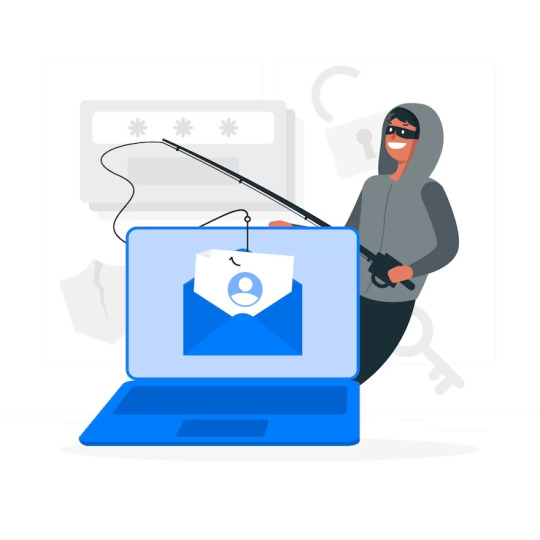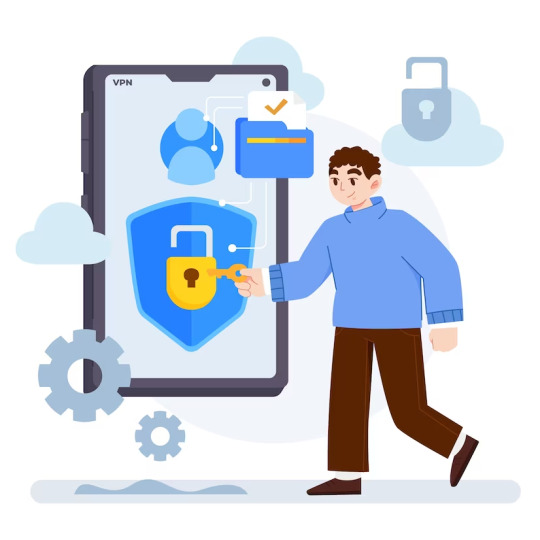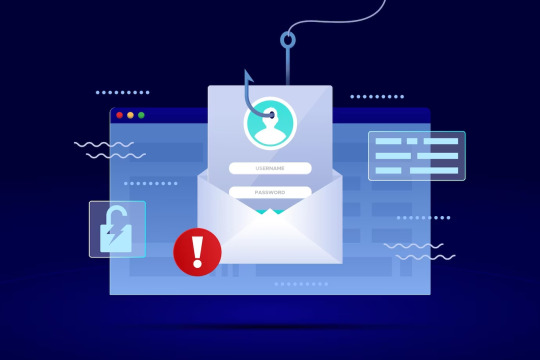Don't wanna be here? Send us removal request.
Text

🔒🎓 Learn Ethical Hacking: Unlock the Secrets Responsibly! 🎯💻
Curious about cybersecurity and ethical hacking? 🤔💡 Dive into the world of ethical hacking and discover how to safeguard digital landscapes. 💪🛡️
🔵 What is Ethical Hacking?
Ethical hacking is the noble art of testing and securing computer systems and networks with permission. Become a digital guardian, identifying vulnerabilities to shield against malicious attacks! 🛡️🔍
🔵 Join the Journey!
Ready to embark on this exhilarating adventure? Head over to our website and explore the realm of ethical hacking. Empower yourself with knowledge and protect the virtual world! 🌐🔒. Learn ethical hacking with us.
0 notes
Text
Password Cracking: Understanding the Art of Password Hacking
In today's digital age, where cybersecurity is of utmost importance, the strength of our passwords plays a vital role in safeguarding our sensitive information. However, despite numerous efforts to create strong and unique passwords, there are still individuals and organisations with malicious intent who employ password cracking techniques to gain unauthorised access to personal or confidential data. In this article, we will delve into the world of password cracking and explore the methods used by hackers to compromise security. By understanding these techniques, we can better protect ourselves and our digital assets.
I. Introduction: The Growing Threat of Password Cracking
In an era where virtually every aspect of our lives is intertwined with technology, the need for robust security measures has never been more critical. Password cracking, also known as password hacking, is an illicit activity that involves decrypting or circumventing password protection systems to gain unauthorised access. The rise of password cracking has posed a significant threat to individuals, businesses, and even governments worldwide.
II. The Psychology of Passwords: Weaknesses Exploited by Crackers
Passwords serve as the first line of defence against unauthorised access. However, many users unknowingly create passwords that are vulnerable to cracking attempts. In this section, we will explore the common weaknesses exploited by password crackers and provide guidance on how to create strong and resilient passwords.
III. Common Password Cracking Techniques
Password cracking techniques have evolved over time, becoming more sophisticated and efficient. Hackers employ various methods to crack passwords, each with its own advantages and limitations. Let's take a closer look at some of the most prevalent techniques used by password crackers:
1. Brute Force Attack
A brute force attack is a straightforward yet time-consuming method used to crack passwords. It involves systematically attempting every possible combination of characters until the correct password is discovered. This technique can be effective against weak passwords but is less likely to succeed against complex and lengthy ones.
2. Dictionary Attack
In a dictionary attack, hackers use a pre-compiled list of common words, phrases, or passwords to guess the target password. This method relies on the fact that many users choose easily guessable passwords based on dictionary words or common patterns. Advanced variations of the dictionary attack incorporate additional rules, such as appending numbers or special characters to the guessed words.
3. Rainbow Table Attack
A rainbow table is a precomputed table of possible plaintext passwords and their corresponding hash values. Password hashes are commonly stored in databases for verification purposes. By comparing the hashes in the database with those in the rainbow table, hackers can quickly find matches and retrieve the original passwords.
IV. Protecting Against Password Cracking
Now that we have explored the techniques employed by password crackers, it is essential to understand how we can protect ourselves against such attacks. By implementing the following security measures, individuals and organisations can significantly enhance their password security:
1. Create Strong and Unique Passwords
Using strong and unique passwords is the first line of defence against password cracking. A strong password should be at least eight characters long, incorporating a combination of uppercase and lowercase letters, numbers, and special characters. Avoid using easily guessable information such as birth dates or names.
2. Enable Two-Factor Authentication (2FA)
Two-factor authentication adds an extra layer of security by requiring users to provide an additional piece of information, typically a one-time code sent to their mobile device, along with their password. This method makes it significantly more challenging for hackers to gain unauthorised access, even if they manage to crack the password.
3. Regularly Update and Change Passwords
Frequently updating and changing passwords can mitigate the risk of a successful cracking attempt. It is recommended to change passwords every three to six months, especially for accounts with sensitive information or access privileges.
V. Conclusion: Safeguarding Our Digital World
In conclusion, password cracking remains a persistent threat in our digital landscape. Understanding the techniques employed by hackers and implementing robust security measures is crucial in safeguarding our personal and sensitive information. By creating strong and unique passwords, enabling two-factor authentication, and regularly updating our passwords, we can significantly reduce the risk of falling victim to password cracking attacks. Let us remain vigilant and proactive in protecting our digital world.
"The strength of a password lies in the hands of its creator. Choose wisely." - Unknown
Remember, your cybersecurity is in your hands. Stay informed, stay vigilant, and stay secure.
0 notes
Text
Email Spoofing: Unveiling the Threats and Defenses
In the vast realm of cyberspace, email spoofing has emerged as a prevalent technique used by malicious actors to deceive recipients and carry out various cybercrimes. Our comprehensive guide dives into the depths of email spoofing, shedding light on its intricacies, potential threats, and effective defense strategies. Discover how email spoofing works and the underlying vulnerabilities it exploits within the email infrastructure. Gain a clear understanding of the risks posed by spoofed emails, including phishing attacks, malware distribution, and identity theft. Explore real-world examples that illustrate the devastating consequences of falling victim to email spoofing.

#hacking#email#network hacking#cybersecurity#ethical hacking tutorial#networking hacks and tricks#network hacking course#tricks#tips#bluetooth#bluebugging
0 notes
Text
Bluetooth Hacking: A Wake-Up Call for Digital Security
🔹 In our hyperconnected world, Bluetooth technology has become integral to our lives. It allows us to wirelessly connect devices, making life easier and more convenient. However, with great convenience comes great responsibility. Let’s talk about Bluetooth hacking and the importance of safeguarding our digital lives.
🔹 Bluetooth hacking refers to unauthorized access and control of Bluetooth-enabled devices. Cybercriminals exploit vulnerabilities in Bluetooth protocols to gain entry into our smartphones, laptops, headphones, and even IoT devices. This poses serious threats to our privacy, data security, and personal safety.

🔹 So, what can we do to protect ourselves? Here are a few essential steps:
1️⃣ Keep your devices updated: Regularly update your Bluetooth devices’ firmware and operating system. Manufacturers often release security patches to address vulnerabilities.
2️⃣ Enable encryption: Always use Bluetooth devices that support encryption. This ensures that data transmitted between devices is secure and less susceptible to interception.
3️⃣ Disable discoverability: Set your devices to “non-discoverable” mode when you’re not actively pairing them with other devices. This prevents potential attackers from easily identifying and targeting your device.
4️⃣ Use strong, unique passwords: When pairing devices, use strong and unique PINs or passphrases. Avoid using default or common passwords, as they are easy targets for hackers.
5️⃣ Be cautious in public: Exercise caution when using Bluetooth in public spaces. Avoid connecting to unknown or suspicious devices, as they may be maliciously set up to intercept your data.
🔹 Remember, Bluetooth hacking is a real threat, but we can significantly reduce the risks by adopting these precautions. Stay vigilant, stay informed, and stay one step ahead of cybercriminals. Our digital security is in our hands! 💪🔒💙
0 notes
Text
Bluebugging: Unveiling the Invisible Threat in Wireless Communication
Discover the hidden danger lurking within wireless communication with Bluebugging. This cutting-edge technique allows hackers to exploit vulnerabilities in Bluetooth-enabled devices, granting them unauthorized access and control. In this informative article, we delve into the world of Bluebugging, exploring its methods, potential risks, and ways to protect yourself and your devices from this insidious cyber threat. Stay informed and stay secure with our comprehensive guide to Bluebugging and its implications for the digital age.

#hacking#ethical hacking tutorial#network hacking#network hacking course#networking hacks and tricks#cybersecurity#tips#tricks#bluetooth#bluebugging#tutorial
0 notes
Text
Understanding the Art of IP Spoofing | Insecure
IP spoofing poses a significant challenge for network administrators and security professionals, as it undermines the fundamental trust and integrity of network communications. Traditional security mechanisms, such as firewalls and intrusion detection systems, often struggle to identify and prevent IP spoofing attacks due to the difficulty in distinguishing genuine packets from spoofed ones.

#hacking#ip spoofing#network hacking#ethical hacking tutorial#cybersecurity#networking hacks and tricks#network hacking course
0 notes
Text
Protect Your Inbox from Deceptive Emails
It's time to talk about this deceptive tactic that can potentially wreak havoc on your online security. 😱
Email spoofing refers to the act of forging the sender's address in an email to make it appear as if it came from a different source. 🎭 Cybercriminals exploit this technique to deceive recipients and manipulate them into revealing sensitive information or engaging in harmful actions.
🛡️ Don't Fall for the Bait 🛡️
⚠️ Stay Vigilant: Remember, just because an email looks legitimate doesn't mean it actually is. Be cautious, especially when dealing with unfamiliar senders or unexpected requests.
🔍 Check the Sender: Examine the email address carefully. Spoofed emails often use slight variations or imitate popular domains to deceive you. Don't be fooled by these clever tricks!
📢 Look for Red Flags: Poor grammar, unusual requests, urgency, or overly generic greetings can be signs of a spoofed email. Be skeptical and double-check before taking any action.

🔒 Safeguarding Measures 🔒
🔒 Implement Strong Passwords: Protect your email accounts with complex, unique passwords. Avoid using easily guessable information like birthdates or pet names.
📧 Enable Two-Factor Authentication: Add an extra layer of security by enabling 2FA for your email accounts. This ensures that even if your password is compromised, unauthorized access is prevented.
🔒 Stay Updated: Regularly update your email software and operating system to patch any security vulnerabilities. Keep your antivirus and anti-malware programs up to date as well.
🔒 Educate Yourself and Others: Learn about email spoofing, phishing, and other cyber threats. Share this knowledge with friends, family, and colleagues to create a safer online community.
🔍 Report Suspicious Emails: If you receive a suspected spoofed email, report it to your email service provider or IT department. By doing so, you contribute to the fight against cybercrime.
💪 Take Control of Your Inbox 💪
Remember, knowledge is power. By being aware of email spoofing techniques and implementing security measures, you become less susceptible to cyber threats. Stay vigilant, stay informed, and protect yourself and your digital identity. Together, we can beat email spoofing! 💪🔒
0 notes
Text
What Is Bluebugging and How Can You Keep Your Devices Secure?
Bluebugging is a type of hacking attack in which the perpetrator gains unauthorized access to a Bluetooth-enabled device. This type of attack can be particularly dangerous as it allows the attacker to gain access to all of the device's data and even make phone calls or send messages without the user's knowledge. To stay safe from bluebugging, it is recommended that you keep your Bluetooth turned off when not in use, only pair with trusted devices, and keep your devices updated with the latest software and security patches. It is also advisable to use strong passwords and two-factor authentication whenever possible. By taking these precautions, you can help protect yourself against this increasingly common form of cybercrime.

0 notes
Text
The Dark Side of Cybersecurity: Understanding the Risks of Password Hacking
Password hacking is a cybersecurity threat that has become increasingly prevalent in recent years. Passwords are designed to protect sensitive information and secure personal data from unauthorized access. However, hackers can gain access to these passwords through various techniques, such as brute force attacks and social engineering tactics. This not only compromises an individual’s personal information but can also lead to identity theft, financial loss, and reputational damage. Therefore, there is a critical need for individuals and businesses to implement strong passwords and employ multifactor authentication techniques to prevent password hacking attacks. It is crucial to protect oneself from this threat as the consequences of a successful attack can be devastating.

0 notes
Text

Network Attacks Tutorials | Insecure Lab
Network attacks tutorials are becoming more and more popular among both aspiring hackers and cybersecurity professionals. These tutorials offer step-by-step guidance on how to successfully execute various types of network attacks, such as denial-of-service attacks, SQL injections, and phishing attempts. While some may argue that these tutorials are dangerous and promote nefarious behavior, they can also serve as a valuable tool in the fight against cybercrime. By studying these tutorials, cybersecurity professionals can gain insight into the tactics and methods used by hackers. This knowledge can then be used to better protect networks and prevent future attacks. It is important, however, to always use these tutorials ethically and responsibly, and only for educational purposes.
#hacking#network hacking#ethical hacking tutorial#network hacking course#networking hacks and tricks
0 notes
Text
Master the Art of Ethical Hacking with The Expert Tips and Tricks
As technology continues to advance at a rapid pace, the need for ethical hackers has never been greater. An ethical hacking tutorial is a valuable resource for those interested in learning the necessary skills to protect networks and computer systems from malicious attacks. This tutorial covers a range of topics, including identifying vulnerabilities, securing networks, and using penetration testing tools to detect and prevent cyberattacks.

The ethical hacker’s role is to think like a hacker, identifying weaknesses in systems and preventing hackers from exploiting them. By following the guidelines outlined in an ethical hacking tutorial, individuals can become highly skilled cybersecurity professionals, protecting the integrity and security of their organization’s IT infrastructure.
#hacking#ethical hacking tutorial#network hacking#networking hacks and tricks#network hacking course
0 notes
Text
Hacking Tricks | Insecure Lab
Hacking is all about the tricks, and Insecure Lab has them all. Our focus on hacking tricks, combined with our expert team and range of resources, makes us the go-to destination for anyone looking to take their hacking skills to the next level. Visit our website for more information.

0 notes
Text
Hacking Tips | Insecure Lab
Looking for the best hacking tips? Look no further than Insecure Lab. We offer a range of resources, including tutorials, videos, and articles, to help you develop your skills and stay ahead of the game. Visit our website to know more.

0 notes
Text

Network hacking involves using various methods to gain unauthorized access to computer networks or systems. This can be done through exploiting vulnerabilities in software or hardware, using social engineering techniques, or brute-force attacks. The goal of network hacking can vary from stealing sensitive data to disrupting network operations.
1 note
·
View note
Text
Learn Network Hacking | Insecure Lab
If you are interested in learning about network security and ethical hacking, simply start by learning the basics of network hacking such as networking and operating systems. There are many resources available online such as Insecure Lab, that offer tutorials, books, and online courses to help you learn about network security and ethical hacking. To learn more, visit the official website today!

0 notes
Text

Insecure Lab is the perfect place to Learn Ethical Hacking. We offer a variety of courses that will teach you how to protect your networks from criminals and hackers. In addition to our instruction, we also provide you with access to our online lab, which will allow you to practice your new skills.
0 notes
Text
Networking Hacks and Tricks | Insecure Lab
The word hacking refers to unauthorized or illegal access to computer systems or networks. If you are looking for online resources to learn ethical hacking or networking hacks and tricks, check out Insecure Lab. An online resource where you can get all informational articles or tutorials related to ethical hacking or cybersecurity. For more information, visit the official website today!

1 note
·
View note